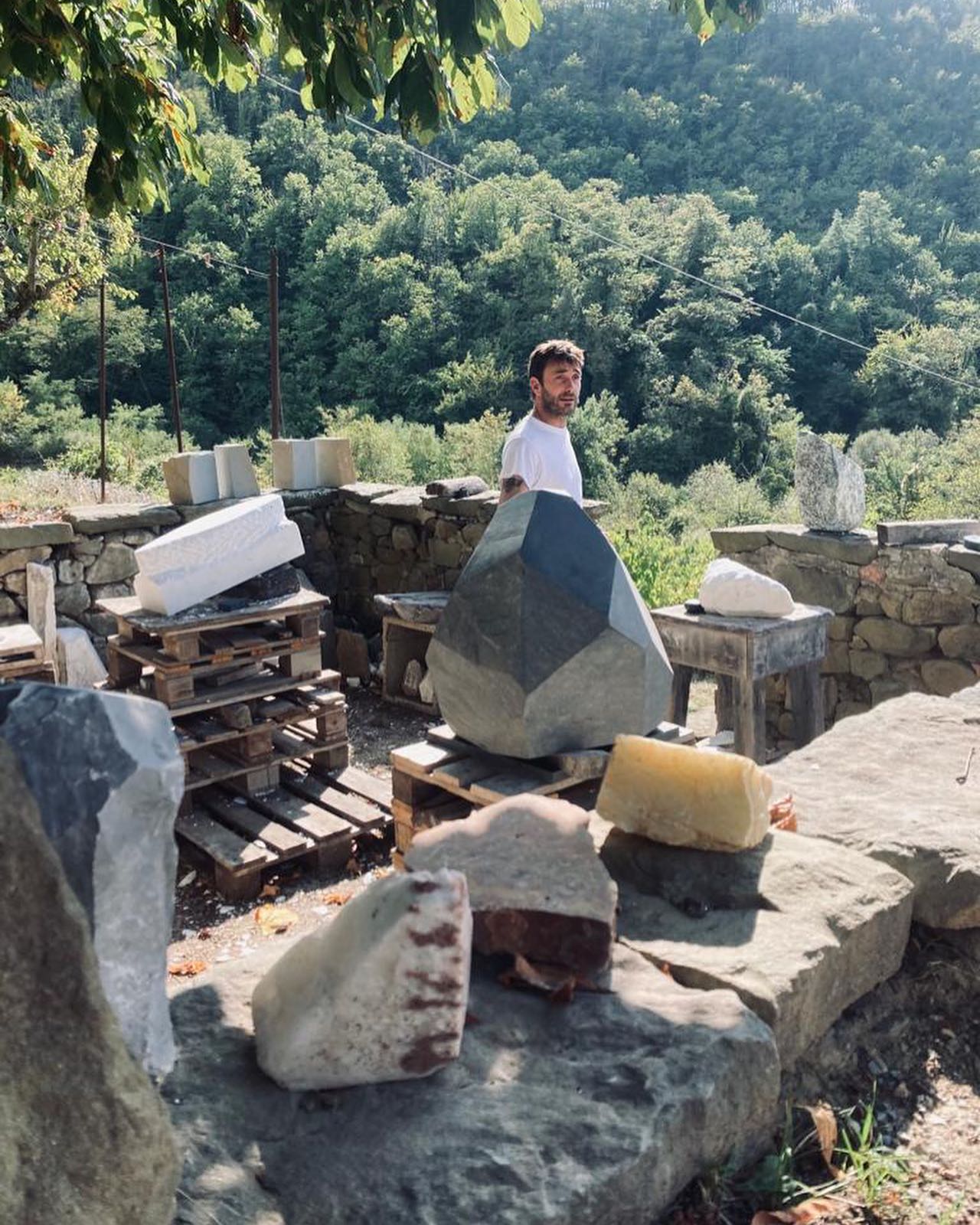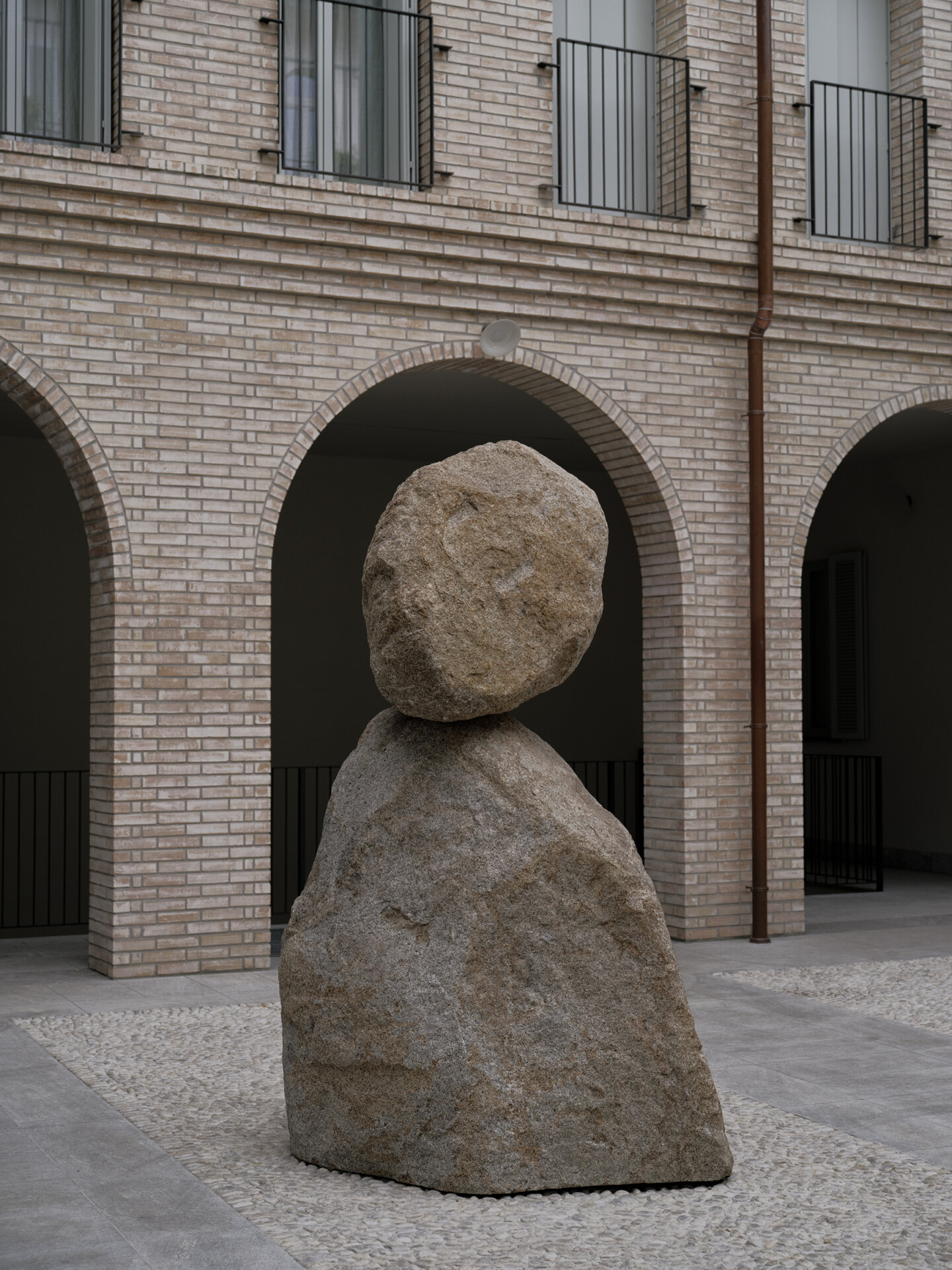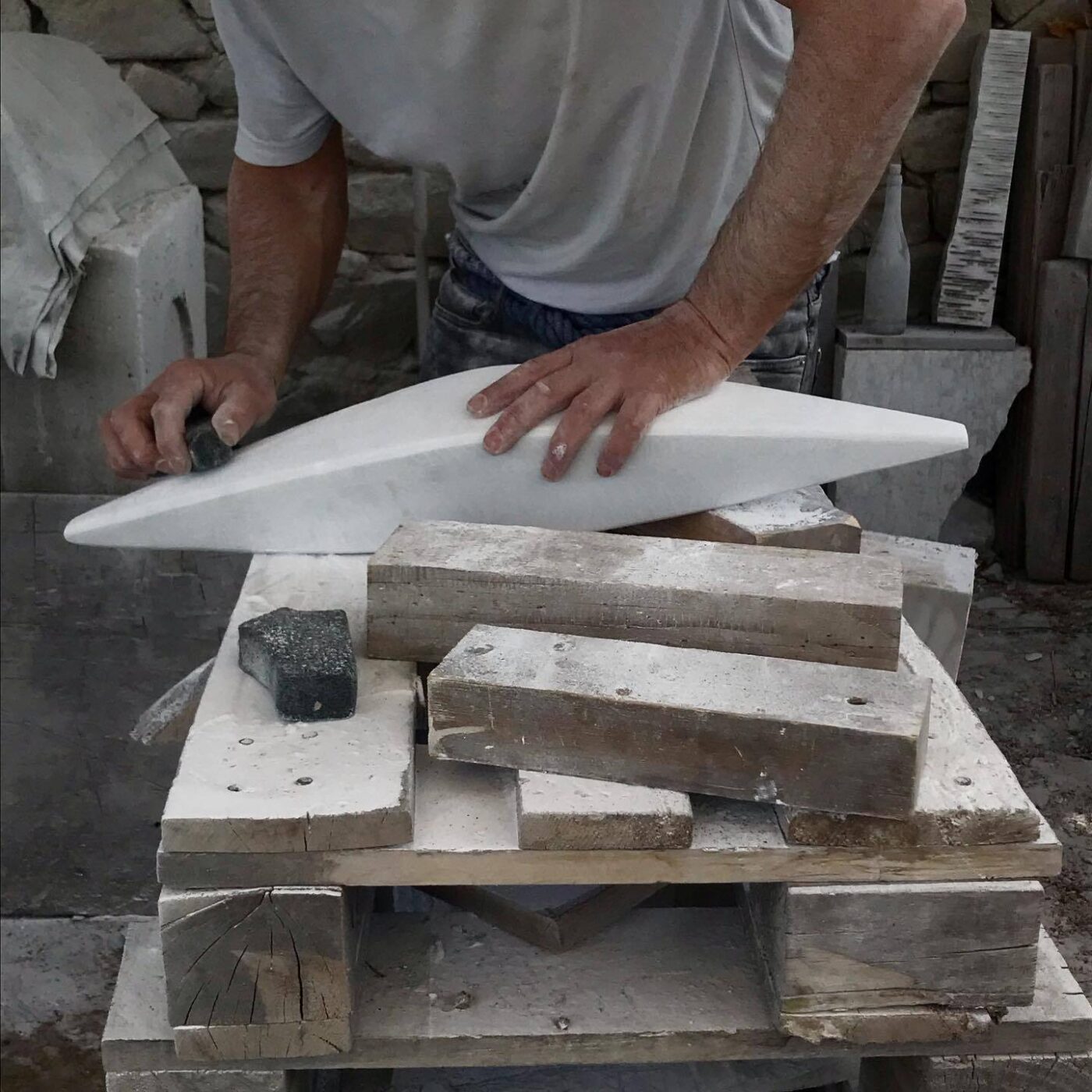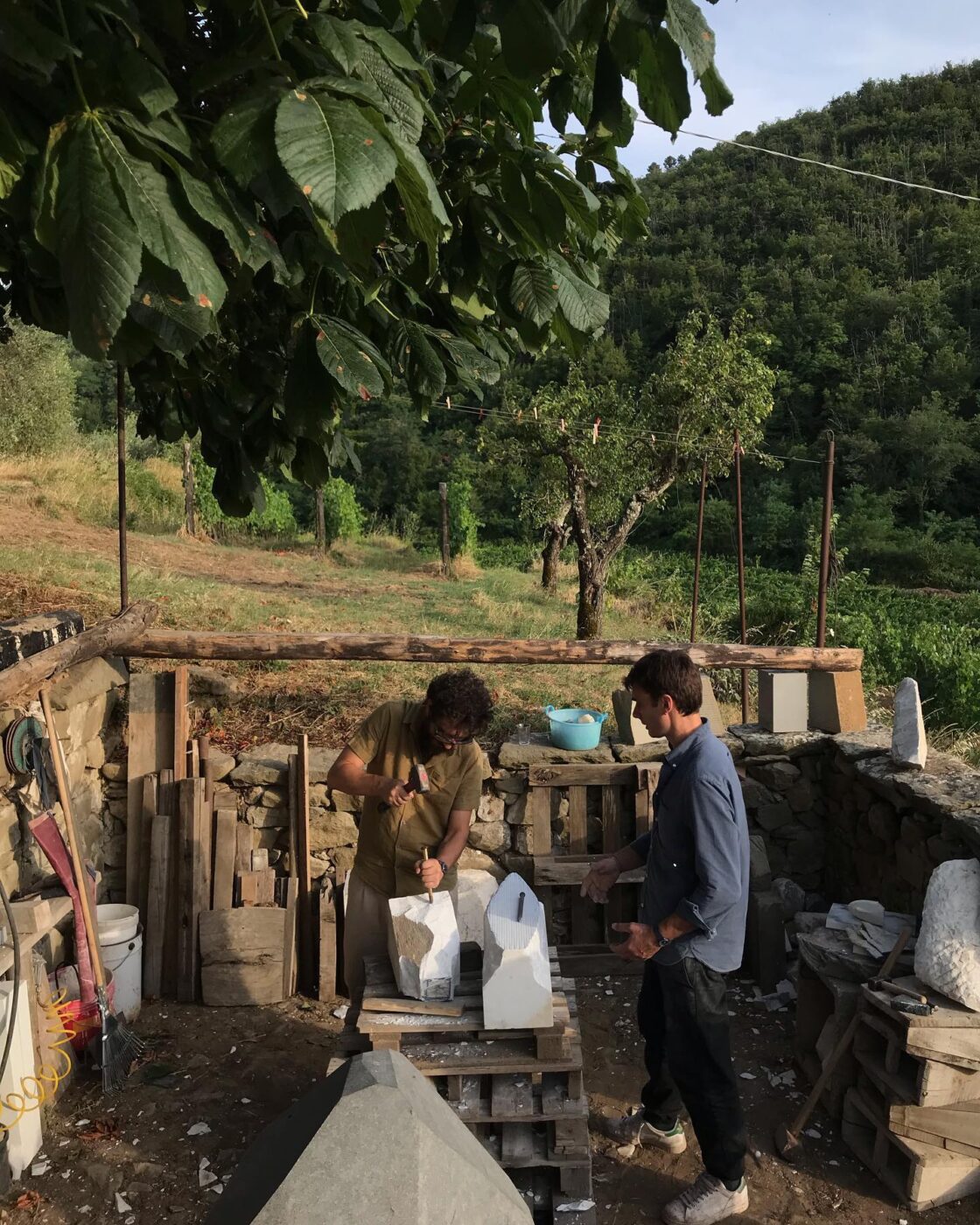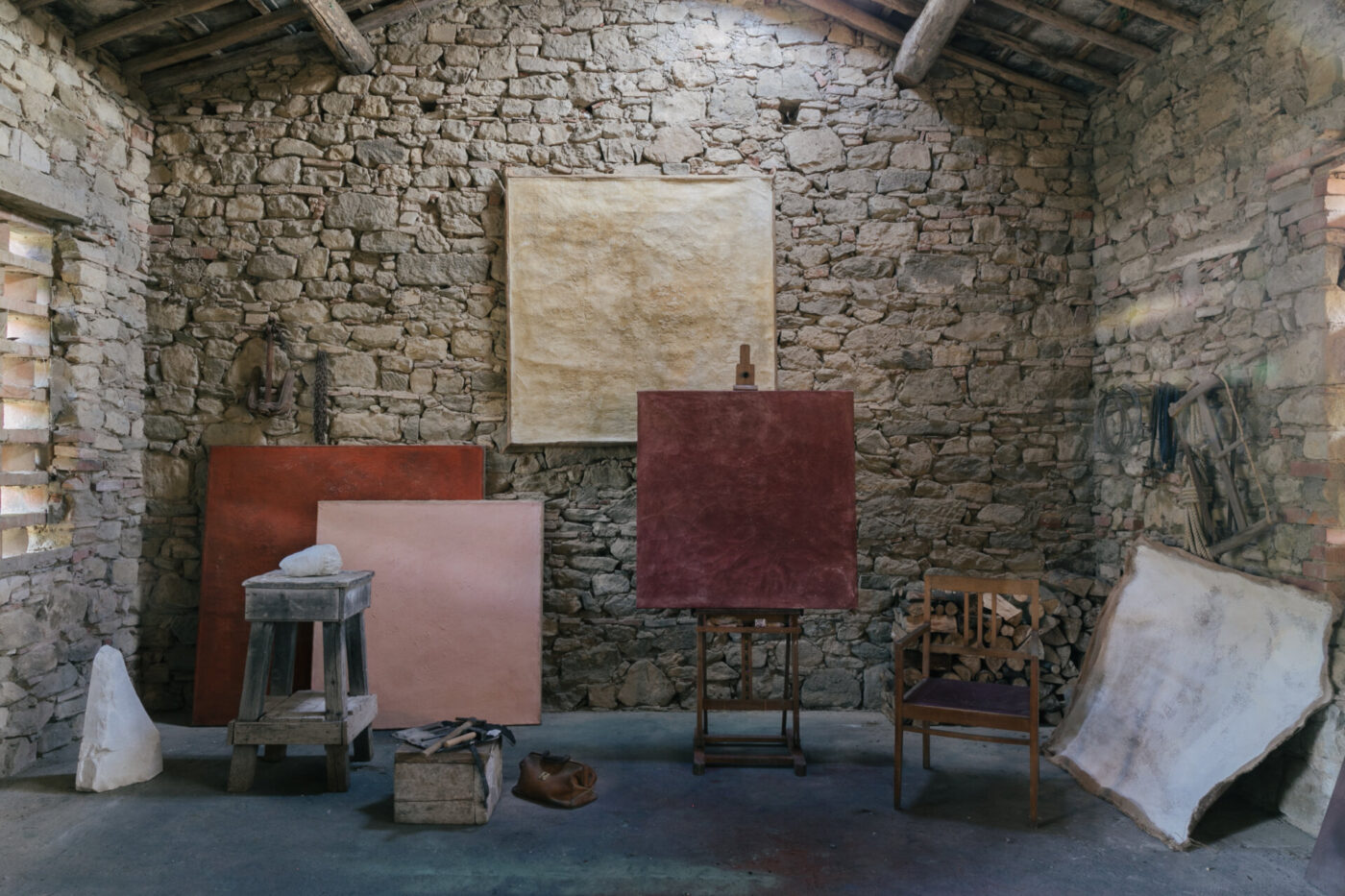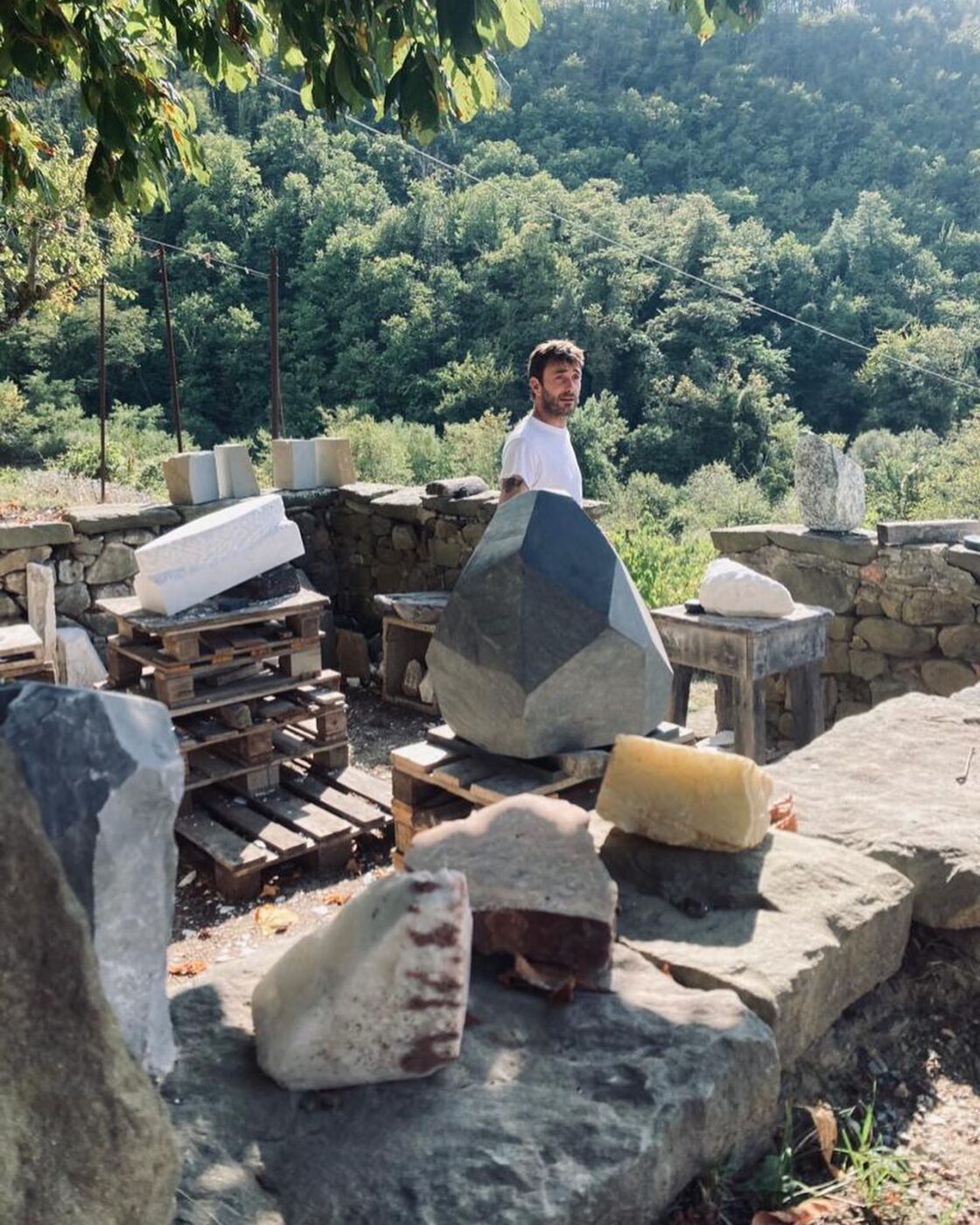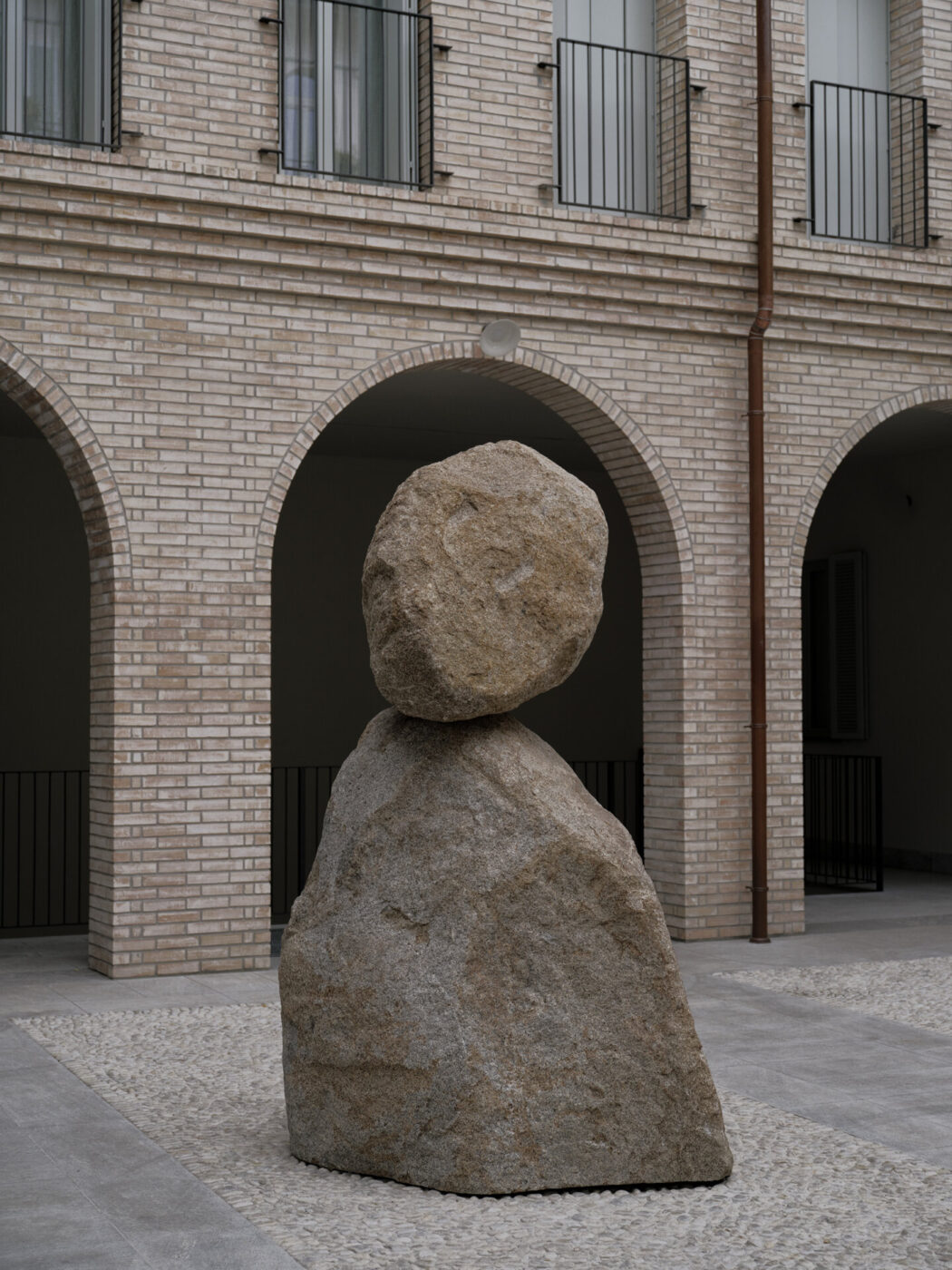There are people who have a burning desire to be exorbitantly wealthy, on account of social pressures, impoverished beginnings, or other motives. Then there are the people who realize early on that it is not wealth that should be sought, instead it is freedom. Artist Lorenzo Brinati is one of these people; nothing in his life is neither accidental nor intentional, and his one guiding light post is that of freedom.
I’m on my way to his studio, one hour from Florence, and soon the greenery of the Chianti hills gives way to an uphill dirt road; big clouds of white dust cloak the car as we drive up. His somewhat rough, rustic appearance as he walks up leads me to imagine his personality–an assumption that’s compounded by his choice to live so far out of the way–but he’s surprisingly sweet and sensitive from the first second, greeting me with a big smile and a hug before offering me coffee and amaro at the local restaurant–“the best in Chianti” he swears.
He’s been very busy lately–and, as someone who never hesitates to throw himself into work, he’s quite happy about this fact. He’s just opened a solo show at Cadogan Gallery in London and is anxious to finish up a major commission for an outdoor sculpture, to be installed in the courtyard of the gallery’s space in Milan. He found the right kind of granite for it on Elba island–propitious, considering his love for the sea. Lorenzo, an avid sailor, runs to the sea every chance he gets, again, in search of freedom. Its waves offer him much of it, as well as artistic inspiration, manifested in his sleek, marble boat hull sculptures.
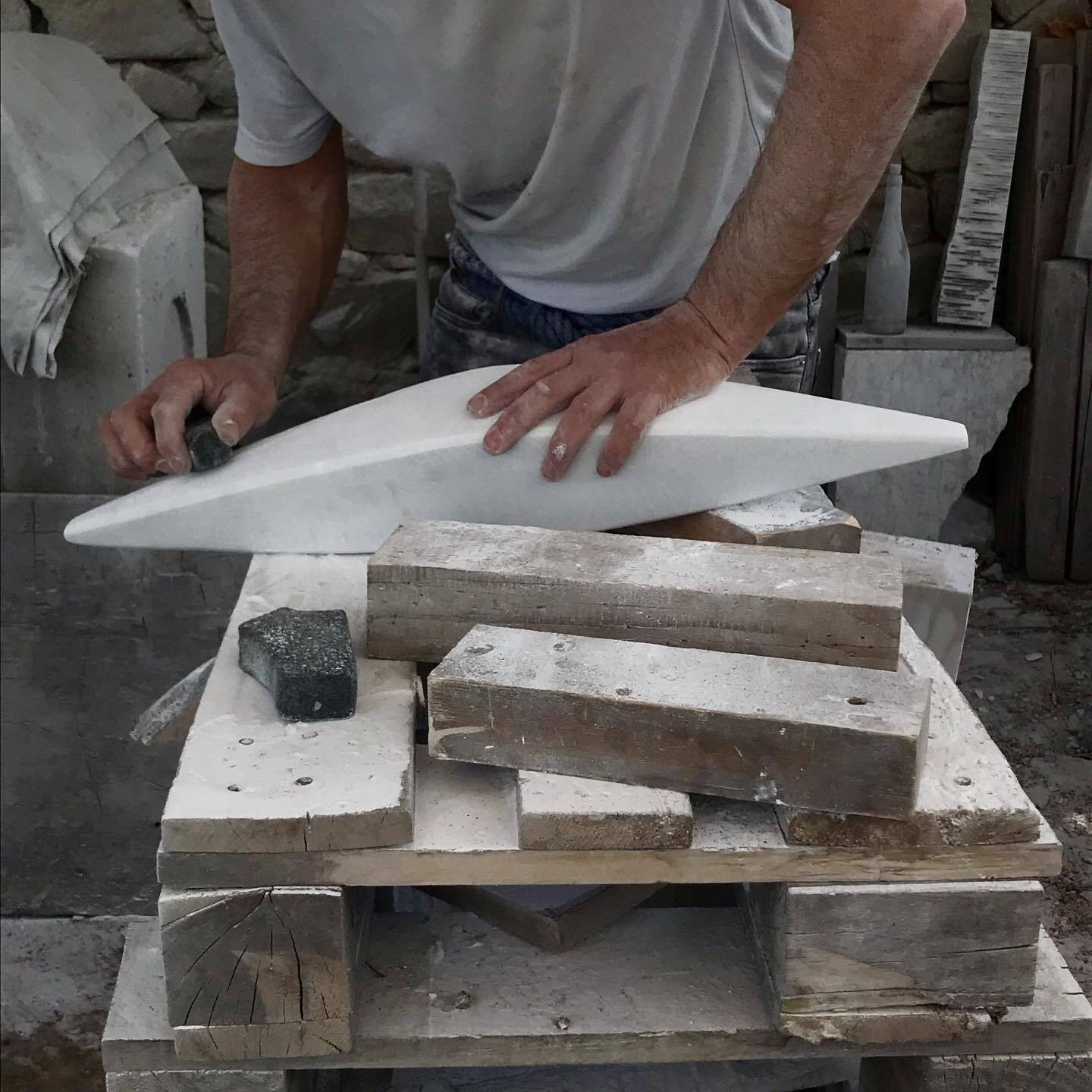
After coffee, we drive deeper into the countryside, to his house and studio, a former farmstead he has restored himself. Assembled piece by piece, the house, known as Casale Filetta is full of clean lines and aesthetic corners, completed with a sculpture studio in the garden and a sweeping vista of the valley below, which he faces while he works. Inside, the whitewashed hood of a fireplace dominates the living room, although I notice that the heat comes from an old-fashioned wood stove next to it; Lorenzo doesn’t mind that it gets cold in the winter. “Le febbre è teraupetica per me,” Lorenzo is known for saying. “Fever is sanity for me.” Pain and hardship, for the artist, are roads to rebirth; it’s in the challenge that he finds clarity.
Lorenzo’s range is quite impressive–he works in both two-dimensional, painting, and three-dimensional, sculpture, mediums–and when I ask about his studies, Lorenzo shrugs. He’s never received a formal education in art–he didn’t particularly like school and would often skip classes, he explains–so everything he knows comes from direct, lived experience. Many of his techniques come from the workshops of what he calls his “maestri”, master carvers and painters that miraculously survived in the narrow alleyways of Florence, passing on their ancient crafts to those willing to listen. His first works, at age 14, were copies of Mogdigliani’s heads, sculpted from stones taken from the street.
Having left at a young age to travel the world, doing odd jobs to survive, Lorenzo never necessarily aspired to be an artist. But he’d just pick up a piece of stone at a quarry and start sculpting on a mountaintop, by the seaside, in the rain, chiseling away until he was satisfied. He’s done that throughout his life; still today, he’ll pick up something on a hike and sculpt along the way. His work is intentional, but arriving at it is not.
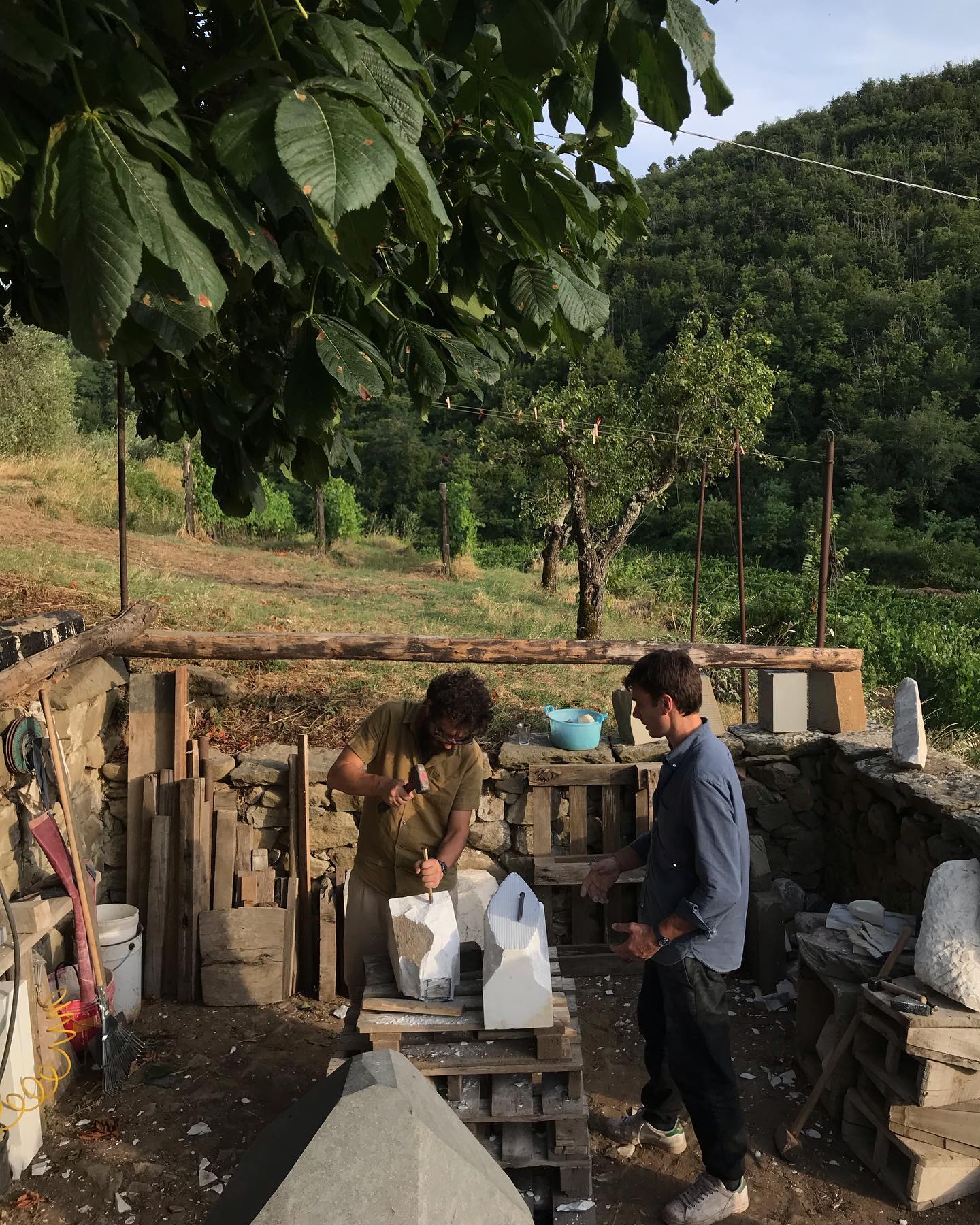
These methods can be traced back to the artist’s spirituality: in touch with the energies of the stones he works with, Lorenzo might halt a work if the interaction doesn’t feel right. If a stone won’t work with him, he won’t work with it.
We continue into the library. An intense smell of palo santo permeates the space, and I can’t help myself from touching one of Lorenzo’s sculptures sitting on his desk: a smooth, curvilinear object, carved into multi-colored marble. “Thoughts move in undulatory motion,” he comments. “I just try to represent such movements in my work.”
Though as much as he is able to see, and feel, the big picture, he’s also able to nail down into the nitty gritty details. The two decades he spent working as a conservator and restorer in the traditional workshops of his maestri, as well as studies in chemistry, have given him an in-depth knowledge of materials–useful, especially for his paintings.
He confesses with pride that he might have been able to unlock the secrets of atramentum, a particular kind of varnish described by Pliny the Elder in his encyclopedic Naturalis Historia. Invented by the legendary Greek painter Apelles, Pliny wrote that atramentum was used to better preserve paintings and to soften the brightest tones of a color, adding “an imperceptible touch of severity to particularly brilliant shades.”
Atramentum’s original recipe has long been lost. “It was most likely made with bitumen and oil,” Lorenzo explains. “Well, I’ve tried over 50 different kinds of oil for it, and I believe I’ve found the original formula… I mean, it’s the formula that works for me, at least.”
As I get closer to one of the paintings, hanging in the living room, I see how Lorenzo’s canvases can only be fully understood in real life. The surface of each work is a miniature landscape meticulously cared for, like the hills we were driving through some hours ago. His dark browns, deep blues, and dusty greens are enhanced by gentle ripples and wrinkles, thickenings of the paint, and small cracks in the varnish–nurtured imperfections.
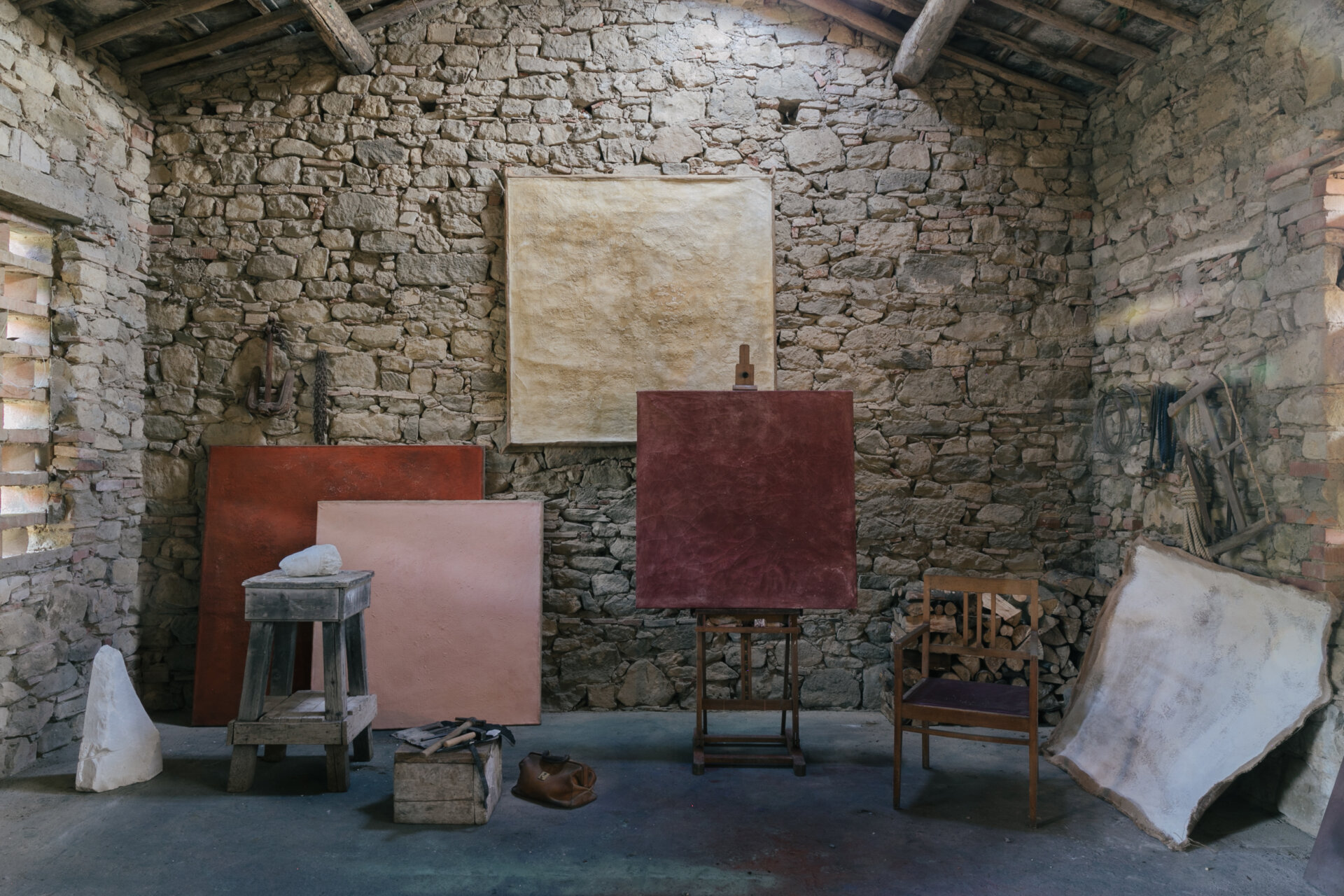
Lorenzo, like the old masters, prepares canvases traditionally with glue and color powder. The glue acts as a binding agent, helping to secure the color powder onto the canvas surface; by mixing them together, the glue ensures that the color adheres properly and creates a stable foundation for the subsequent layers of paint. These colors too he makes himself, and Lorenzo lets me in on a little secret: adding honey to paint is a great way to make the final color brighter and warmer.
I imagine this is what alchemists, as they’re historically understood, were like. It was a profession that experimented with ways of purifying and perfecting materials to better the human body and soul. And this philosophy very much describes Lorenzo, too. Understanding the world as the constant interconnections of its parts, Lorenzo sees himself and his work as belonging to something much larger, though he makes a point of making these relations tangible and transposing them onto his work. He believes that in the search for individuality, we have lost our quest for aesthetics. Lorenzo is the type of person that you sometimes forget can still exist today–whose values and philosophies transcend the material so intensely that you wonder how he navigates the contemporary world without motivation for money. He’s the type of person that the world is needing increasingly more of.
Constantly writing in his little black notebook, Lorenzo thinks he can express himself through art in ways he can’t through the word, but he wants to try anyway. Always actively learning, always trying new trades, he’s lately been taking writing classes. “Poetry is incredibly important to me,” Lorenzo says. “When I started to study sculpture, my teachers taught me to appreciate poetry’s meter to understand how to make a harmonious shape. The principle is the same.”
But no matter what medium he turns his hand to, he takes pieces of the world and turns them into something better and more beautiful than before; leaving Casale Filetta, I realize it’s a gift that extends to the people around him too. The landscape rolling away from his studio glimmers under the orangey light of the setting sun.


